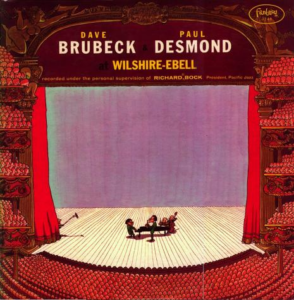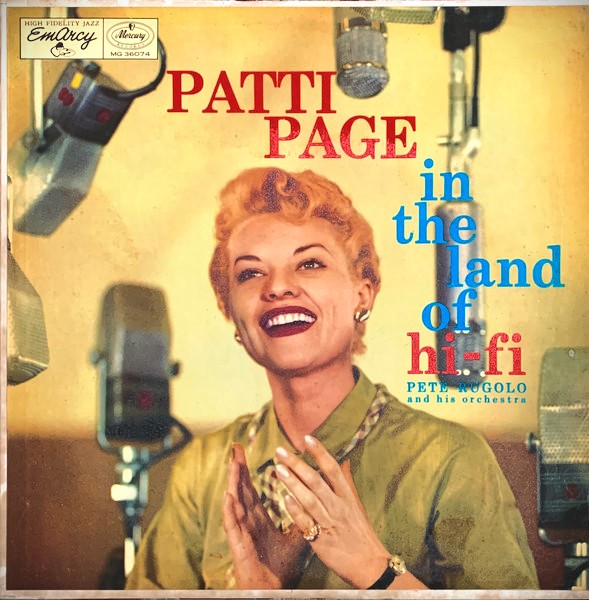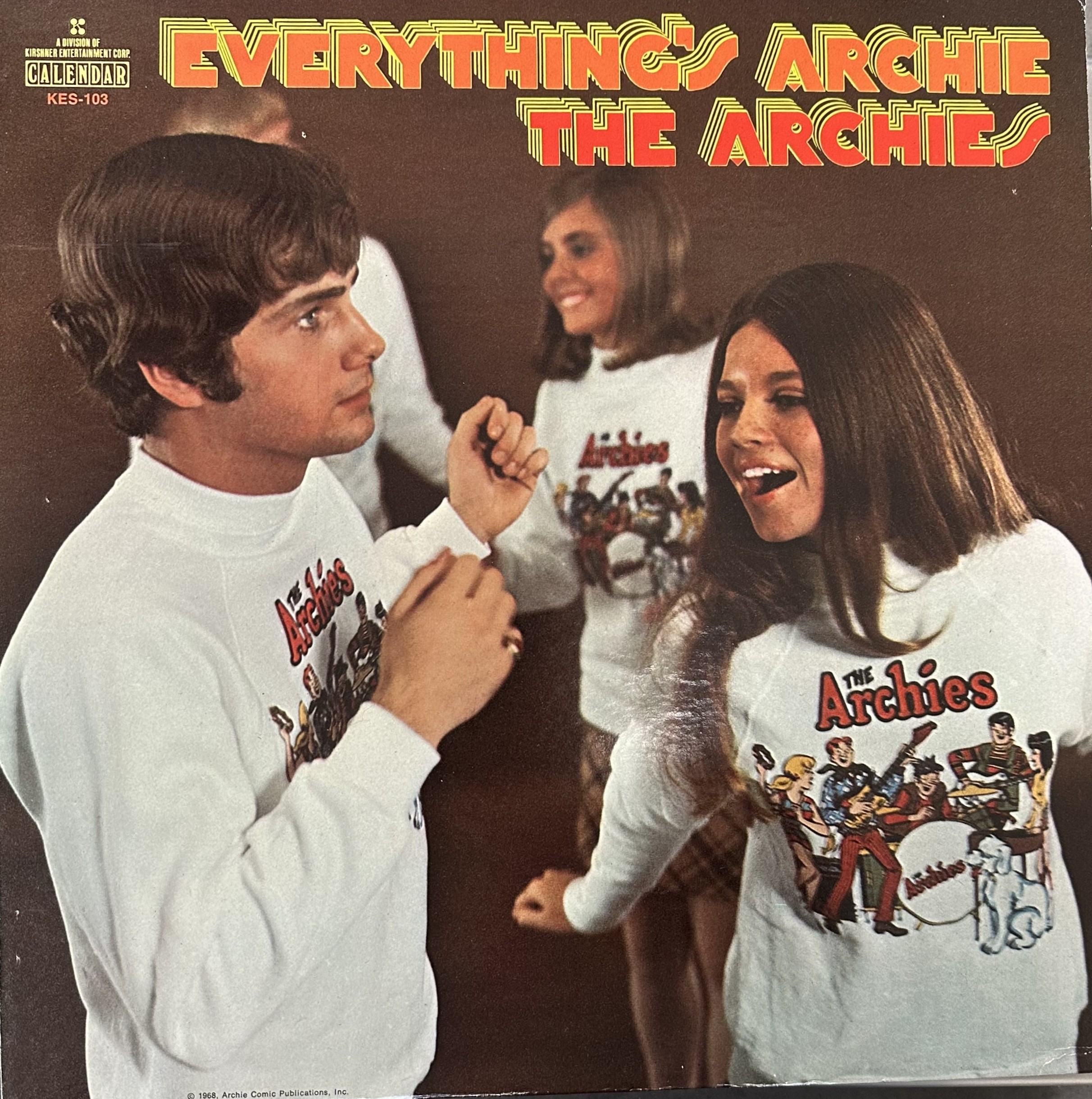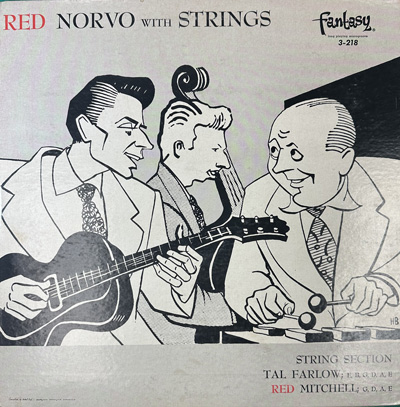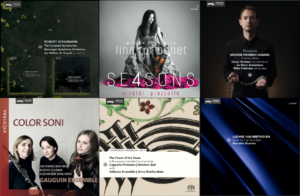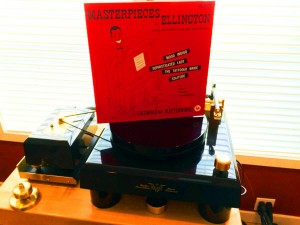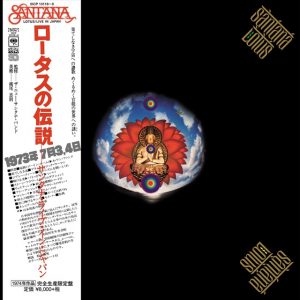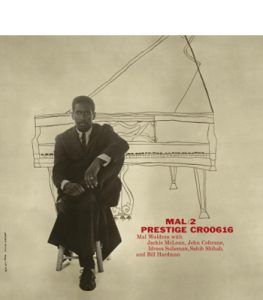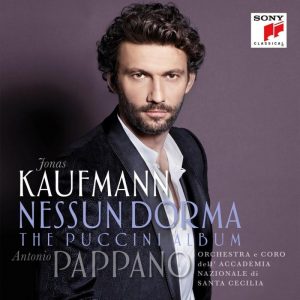I think it's pretty safe to say that most record-collecting audiophiles know Dave Brubeck (1920-2012), and his album, Time Out (Columbia CS8192). After all, it's one of the most popular jazz LPs ever recorded. Time Out was released in 1959, and it introduced the world to Brubeck's use of unusual time signatures. It also introduced the world to one of the greatest wind players in all of jazz, Paul Desmond. In 1961 Brubeck created a second album of time signature experiments called Time Further Out (Columbia CS8490), and I like this title better. Having mentioned these two indispensable jazz classics, which I hope every one of my readers has access to, there's another side of Dave Brubeck, and, of course, Paul Desmond, that I like a lot better. This other side would be the albums that Brubeck made prior to his work for CBS. What I am referring to are the Fantasy records, which Brubeck and his various groups made between 1949 and 1957.
Today I'm writing about Dave Brubeck & Paul Desmond At Wilshire-Ebel (Fantasy 3249). It is one of my favorite Fantasy LPs. It was recorded live on June 20th, 1953, in Los Angeles. As it was recorded outside of Fantasy's northern California home turf, the label hired one of my favorite recording engineers, Richard Bock, the owner of Pacific Jazz, to record the event. Brubeck's quartet for this concert was Paul Desmond (alto sax), Brubeck (piano), Ron Crotty (bass), and Lloyd Davis (drums).
I always start this record on side one cut two, the classic, "Let's Fall In Love." Unlike the big band versions by Ella and Sinatra, which open with brassy preludes, Brubeck opens with the main theme. His piano playing is so sweet that it wouldn't have been out of place on Mr. Roger's Neighborhood. Quickly following the opening is an assertive sounding Desmond, whose magical tone is on full display. The drums and the bass are merely keeping time, allowing the music to unfold in an unforced manner. Inspired simplicity are the only words I can use to describe this cut. An added bonus is the recorded sound of Desmond's sax. He sounds like he's right there, in my living room, standing slightly in front of my speakers.
Side one cut three is "Stardust." It's hard to keep track of all the instrumentalists and singers who've recorded this standard. On this performance, the star, who's usually the star of a Brubeck album, is Paul Desmond. There's an old adage that says you only play a Brubeck record to hear Paul Desmond. This cut drives that notion home, as the rest of the group plays very softly, giving him the spotlight. I can't help but wonder if the best mic in Richard Bock's suitcase was reserved for Desmond's alto sax.
Side two opens with "All The Things You Are." I'm pretty sure the band just came back from a coffee break, or perhaps they enjoyed something stronger. Brubeck and Crotty are not just playing behind Desmond: they are jamming!
The next two cuts, "Why Do I Love You" and "Too Marvelous For Words," are too marvelous for words, and they continue side two's intense magic to the very end of the record.
The sound of this recording is intimate and believable. Unlike most of the prized-by-audiophiles live recordings, such as Belafonte At Carnegie Hall, no reverb was added to this recording. In today's world the audience would have also been mic'd, but for this recording very few mics were used. The result is the sound of a living room concert, except for the fact that the audience sounds rather large for a living room. The best way to describe the sound is unhyped and effortless.
This is the kind of record that benefits from high end stylus tips. The Hana Eh and Denon DL160, which both feature ordinary elliptical styli, sound dead and gray on this record. When I played it with the Shibata tipped AT OC XSH, and the Microridge tipped Dynavector 17D, the sax carved out a more believable space within the soundfield, and the cymbals were cleaner. The room decay and the microdynamics were also better. Simply put, some albums need a little extra sorting-out in the extreme top end, and this is one of them. My cleanest copy is pressed on black vinyl. I also have a red pressing with slightly better clarity, but it's a little too worn to play for my friends. I tend to prefer conservative stylus tips, such as elliptical and conical, for their faithful tonality. However, some albums need a little extra sorting-out in the extreme top end, and this is one of them.
A note on Fantasy's red vinyl: Over the past three decades I've acquired a number of Fantasy jazz albums on red vinyl, and I love the way they sound. Fantasy's red LPs are always mono. They aren't dynamic powerhouses, they don't have bombastic bass, and they rarely have added reverb. What they do have is a captivating midrange that lets the music speak for itself. In other words, they simply sound like music, albeit really good sounding music! I don't think that red vinyl is inherently better than black vinyl, but the red pressings were Fantasy's first 12" releases, and first releases tend to sound the best. Having said this, finding clean and scratch-free copies of Fantasy's red LPs has always been, at least for me, difficult. Audiophiles tend to like jazz, so, of course, they bought them. The problem is that normal music lovers also bought them, and they, based on the mountains of evidence that I've seen, did not take good care of their records.




